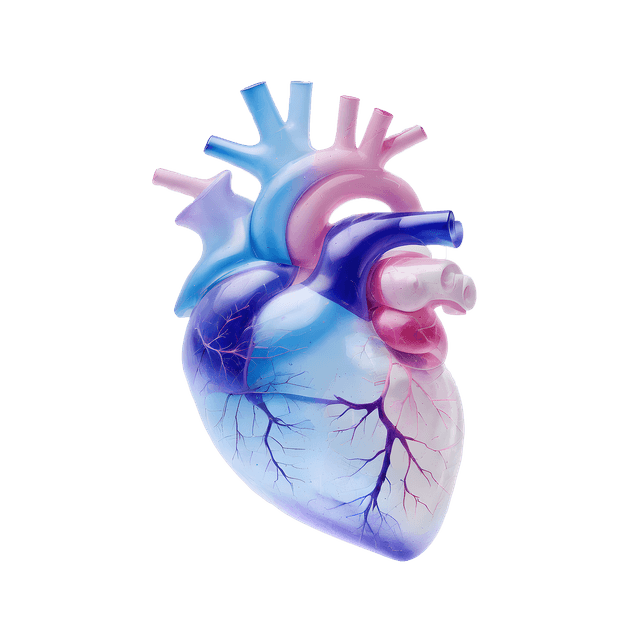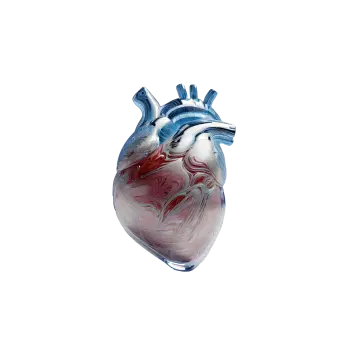Quick version
Summary
Atrial fibrillation is a serious but often silent heart disease that affects hundreds of thousands of Swedes – many without knowing it. The risk increases significantly with age, and undetected fibrillation is one of the main causes of stroke.
Diagnosis is made through an ECG, but since the fibrillation can be temporary, long-term registration is often required. Thanks to new technology, it is now possible to perform long-term ECGs at home and have them analyzed by a cardiologist – completely remotely. This reduces the burden on primary care and makes early detection more accessible to everyone, regardless of where you live.
Despite these opportunities, only a fraction of patients have had access to portable ECG technology through healthcare. By spreading knowledge, introducing screening and using the technology that already exists, we can reduce the hidden number – and save lives.
A public health problem with a large hidden number
Atrial fibrillation is a common heart rhythm disorder that can be treated – but only if it is detected in time. The likelihood of being affected increases significantly with age, and men are at greater risk than women. Although fibrillation itself is rarely dangerous at the moment, it poses a serious health risk: without treatment, atrial fibrillation can increase the risk of stroke by up to five times. That is why early diagnosis is crucial – and can in many cases save lives.
In Sweden, over half a million people live with atrial fibrillation – a heart disease that causes the heart to beat irregularly and often too fast. However, many do not know that they are affected. According to the Fibrillation Report from the Swedish Heart and Lung Association, it is estimated that approximately 127,000 people have atrial fibrillation without having been diagnosed.
This means that thousands of people every day live with a greatly increased risk of stroke, without being aware of it. Stroke can lead to lifelong disabilities – or in the worst case, be fatal.
ECG – the key to diagnosis
Atrial fibrillation is diagnosed through electrocardiography (ECG), which measures the electrical activity of the heart. Traditionally, a 12-lead ECG is used in hospitals, where electrodes are placed on the chest to capture the heart's signals at a given time.
However, since fibrillation is often episodic – that is, it comes and goes – a short measurement window is not always enough to make a diagnosis. Here, ong-term ECG is an important tool. The patient then wears a small portable device that records the heart's activity over one or more days, which gives a more accurate picture of the heart's rhythm in everyday life.
| Age group | Proportion with diagnosis |
|---|---|
| 0-49 years | about 0.5% |
| 50-54 years | about 2% |
| 55-59 years | about 3% |
| 60-64 years | about 5% |
| 65-69 years | about 7% |
| 70-74 years | about 11% |
| 75-79 years | about 16% |
| 80-84 years | about 22% |
| 85+ years | about 30% |
Source: National Board of Health and Welfare and Statistics Sweden (2021).
New technology enables ECG at home
The development of portable and user-friendly ECG devices has revolutionized the possibilities of detecting undetected atrial fibrillation – not only in healthcare, but also at home. With the help of modern technology, individuals can now easily monitor their heart rhythm without having to book physical visits to primary care, where queues are often long and the workload is high.
There are now several reliable methods for performing ECG recording on their own, for example:
- Thumb ECG: Small, portable devices that the patient holds in their hand to record a short ECG when needed.
- ECG patch: Thin, self-adhesive technology that is attached directly to the skin and records the heart rhythm continuously for several days – so-called long-term ECG.
- Mobile apps: Applications that use the phone's camera to read the pulse via the fingertip.
- Heart rate monitors with ECG function: Portable devices that can identify abnormalities in the heart rhythm in real time.
The truly groundbreaking thing is that these tests can now be performed entirely at home and analyzed remotely by cardiologists. This means that you no longer have to wait several months for a specialist visit or be referred to the hospital's ECG department. With a simple order, you can receive a long-term ECG that records your heart rhythm for 1–3 days, and then receive a professional interpretation by a cardiologist – often within a few days.
This digital healthcare chain has the potential to significantly relieve primary care and at the same time reduce the number of undiagnosed cases. Despite this, Hjär-tLung's member survey shows that only one in six people with a fibrillation diagnosis has been given the opportunity to use portable ECG technology through healthcare. This indicates a large gap between technological development and actual use within the healthcare system.
By taking advantage of these new opportunities, we can drastically improve access to rapid and accurate diagnosis – regardless of where in the country you live. The technology already exists – now healthcare and society need to keep up.
Symptoms to watch out for
Atrial fibrillation can cause various symptoms, but sometimes none at all. Recognizing the signs is crucial:
- Irregular or rapid pulse
- Fatigue and decreased energy
- Shortness of breath during activity or rest
- Pressure or discomfort in the chest
- Dizziness or fainting
- Anxiety or anxiety without a clear cause
- No symptoms at all – but the risk of stroke is still there
It is therefore important to take symptoms – or the lack of them – seriously. Regular check-ups and proactive screening can make a difference.
What needs to be improved in healthcare?
To reduce the hidden number and save more lives, we need to:
- Introduce opportunistic screening during healthcare visits, especially for the elderly
- Provide access to specialist clinics with expertise in heart rhythm disorders
- Educate patients for better adherence to treatment and increased safety
- Integrate flexible ECG technology into the healthcare flow – even in primary care
Knowledge and technology save lives
The earlier atrial fibrillation is detected, the greater the chance of avoiding stroke and other serious complications. With the right technology, better information and a more accessible healthcare system, more people can live a long and healthy life – even with fibrillation.





















